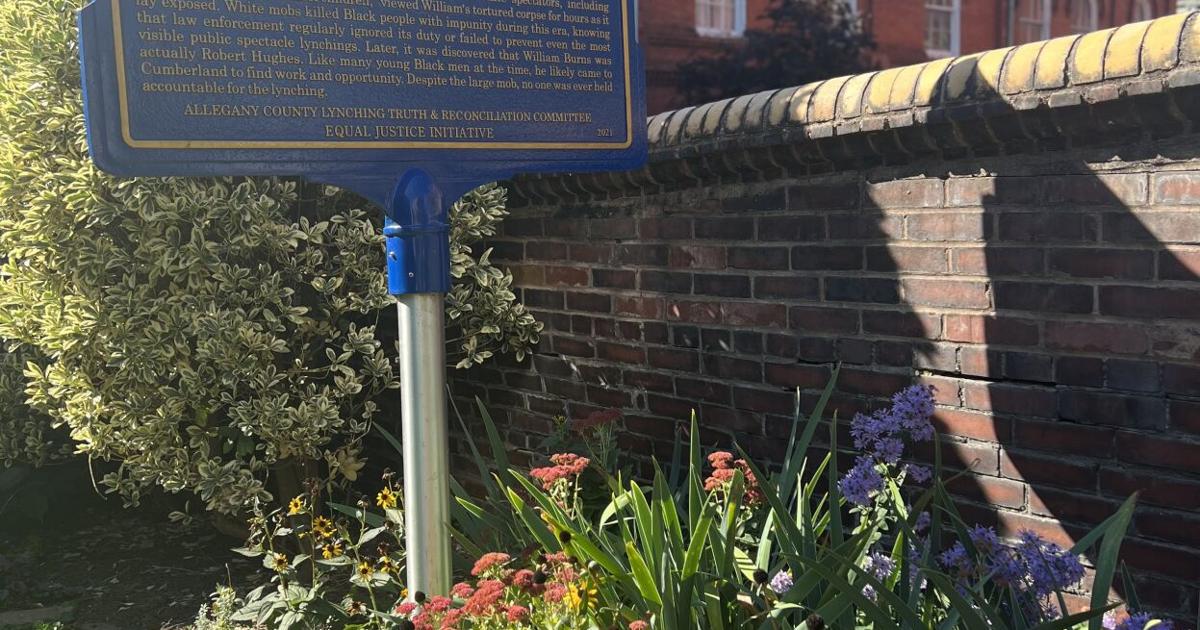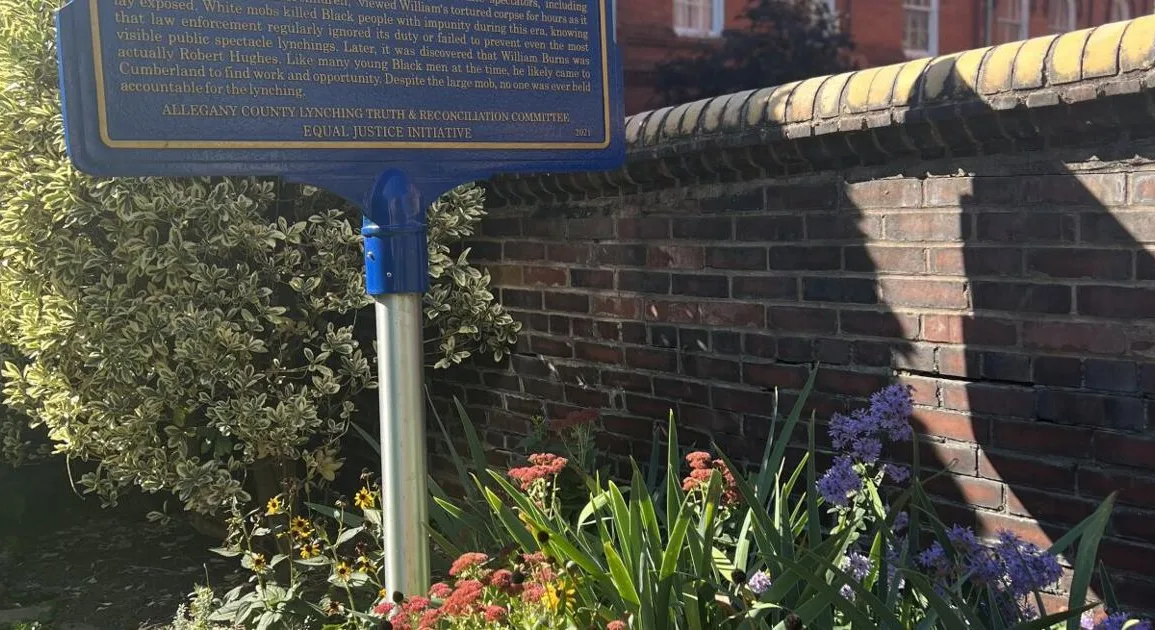
CUMBERLAND — Maryland, in many respects, has led the way in the work of truth and reconciliation, Will Schwarz said.
Schwarz, president of the Maryland Lynching Memorial Project, Inc., talked of the nonprofit organization’s annual forum, “Lynching in Maryland: The Path from Truth to Reconciliation,” being held Saturday at Goucher College in Towson.
“One significant thing about the upcoming conference is that it is our sixth,” he said via email. “That’s an indication of sustained interest in the subject and in the importance of acknowledging and confronting the history of racial terror in Maryland.”
While the topic is not easy to consider, “there is a growing sense that it’s something we have to do,” Schwarz said.
“We have grown phenomenally since our first conference, he said. “When we started there were no county coalitions and now there are coalitions in 14 of the 17 counties where we know lynchings occurred.”
The Maryland Lynching Memorial Project has essentially become an association of independent coalitions, Schwarz said.
“The upshot of all of this work is that the history of racial terror in Maryland, which for so long was denied or dismissed, is now increasingly being spoken of openly,” he said. “We’re bringing the subject into the public square, which is huge.”
Schwarz said this year’s conference was expanded to an all-day event.
“We’re also incredibly excited that we reached an agreement with the Lewis Museum of Maryland African American History and Culture to create a permanent exhibit on the history of racial terror lynching in Maryland,” he said. “It will be known as the Maryland Lynching Memorial Project at the Lewis Museum and is being designed right now.”
The display is scheduled to open by the end of next summer, Schwarz said.
“It will serve as a bulwark of truth for the state, at a time when truth itself is under attack,” he said.
Learn more at mdlynchingmemorial.networkforgood.com.
Cumberland’s EJI marker
Across Maryland, five Equal Justice Initiative historical markers have been placed where lynchings occurred, Schwarz said.
Soil collections have taken place in almost all of the 17 counties where lynchings occurred, he said.
One of the EJI markers is outside Emmanuel Parish of the Episcopal Church in Cumberland to honor the life and recognize the lynching of a Black teenager, Robert Hughes — also known as William Burns.
In 1907, Hughes was accused of killing a white Cumberland police officer, arrested and placed in the county jail, which was near the church.
“By the early morning hours of October 6, rumors of the officer’s death fueled anger among white residents, hundreds of whom surrounded the jail,” the historical marker states.
Armed authorities failed to intervene and disperse the mob.
“Facing no resistance, the mob broke into the jail, abducted (Hughes) from his cell, and dragged him into the street,” it states. “The mob then beat him to death and shot his body repeatedly.”
Although several local officials were present, no one was ever held accountable for the lynching of Hughes.
Place of reflection
Clory Jackson is founder of The Brownsville Project that works to abolish systemic oppression by helping communities confront and heal from suppressed history.
The Brownsville Project helped form the Allegany County Lynching Truth and Reconciliation Committee.
Members of ACLTRC asked descendants of Hughes, as well as Jesse Page, who was reportedly with Hughes during the events that led to the lynching, what plants they might like to see in the garden near the historical marker, Jackson said via email.
Based on their response, lavender, black-eyed Susan and heart-shaped hostas were planted earlier this year, she said.
“As the garden expands, these species will continue to be added,” Jackson said. “We also hope to add benches where people who wish to visit the marker may sit and reflect. Creating a place of reflection supports the healing work so deeply needed as we remember and reconcile with our past.”
Form of entertainment
The Cumberland Times-News and Allegany County Lynching Truth and Reconciliation Committee in 2021 collaborated for articles about racial terror lynchings.
The series included an interview with Margaret Vandiver, researcher and retired professor of criminology and criminal justice for the University of Memphis.
With assistance from Melinda Meador, assistant district attorney for the 27th Judicial District in Union City, Tennessee, Vandiver wrote “A Brief Guide To Using Newspapers For Research On Cases of Lynching, With Notes On Other Sources.”
Lynchings were a form of entertainment in many white communities, she said.
The killing of law enforcement officers and what was interpreted as sexual assault on white women seemed to be the two crimes that led to the most feverish kind of outrage, Vandiver said.
Alleged crimes were reportedly followed by alleged confessions of guilt.
“I think that the confessions are absolutely worthless,” she said.
The Innocence Project, which works to prevent wrongful convictions, free innocent people and create equitable systems of justice, has documented dozens of cases where people confessed to homicides they did not commit, Vandiver said.
“And this is a hard thing for people in the public to understand because you still hear people saying about modern cases in the criminal justice system, ‘Well, if he was innocent, why did he confess?’” Vandiver said.
“They don’t understand the pressures of an interrogation … the confusion that people are experiencing, the terror that they’re experiencing, and if people think that saying something will improve their immediate situation they’ll tend to say it and worry about the consequences later,” she said.


